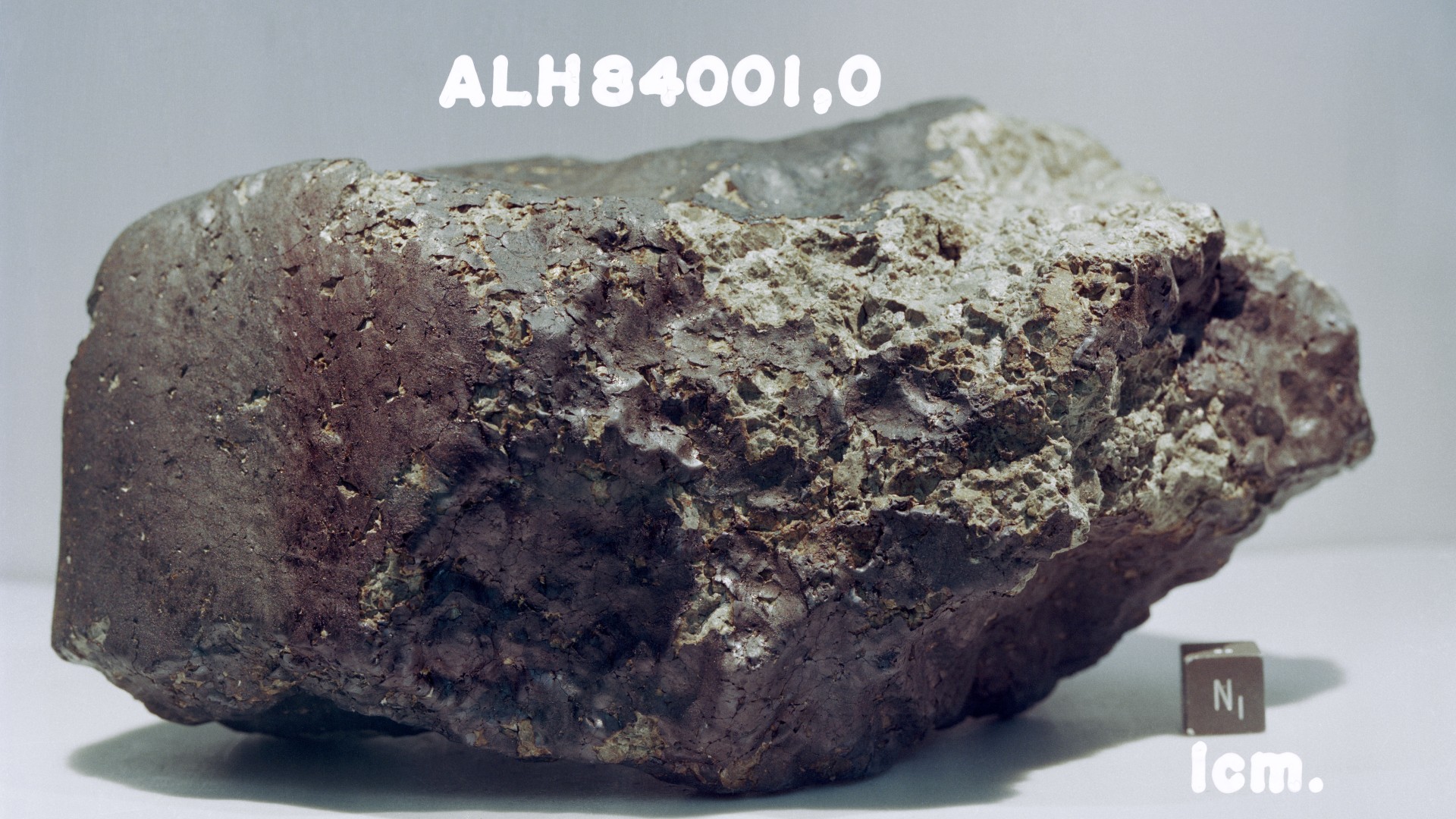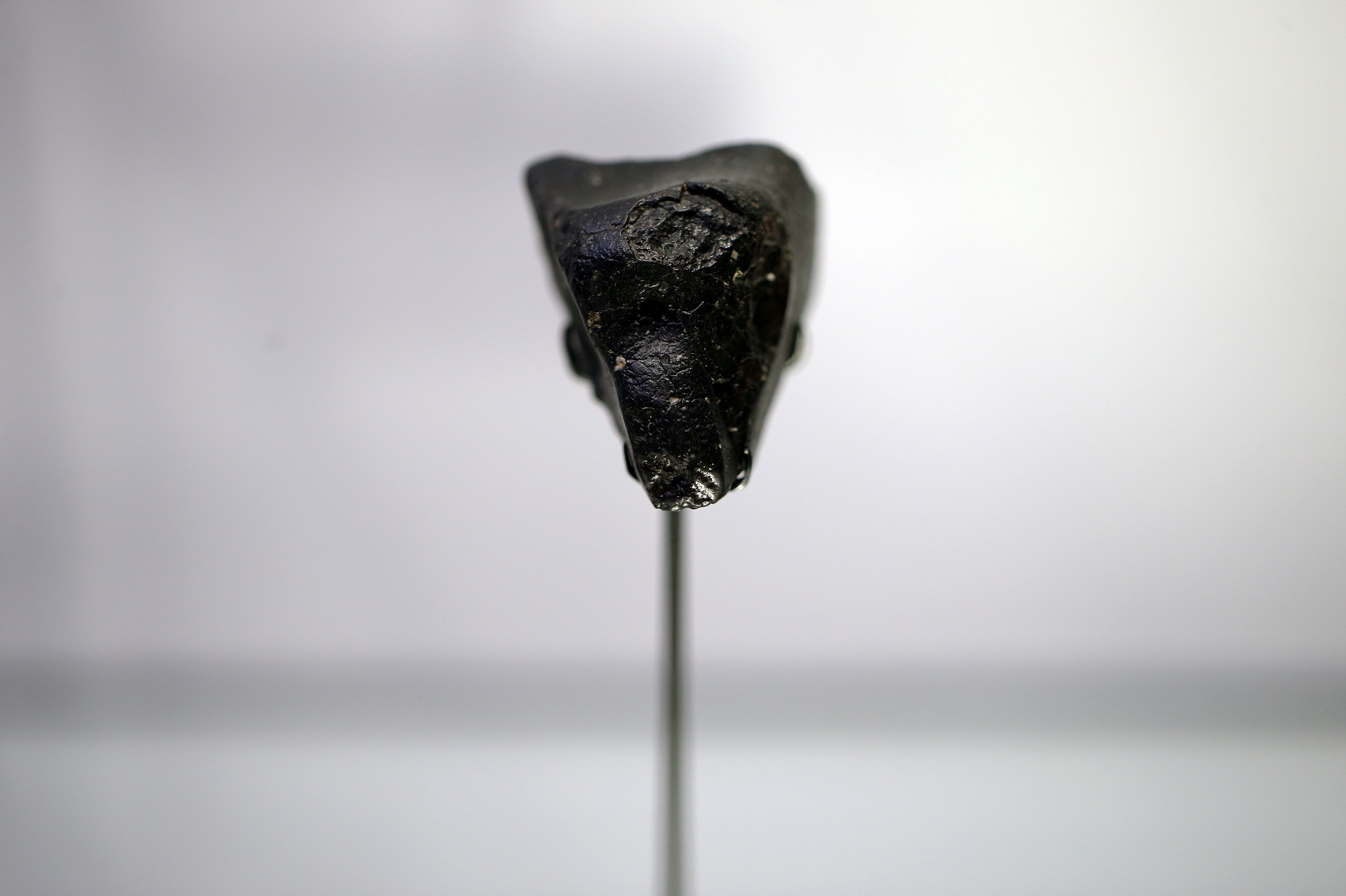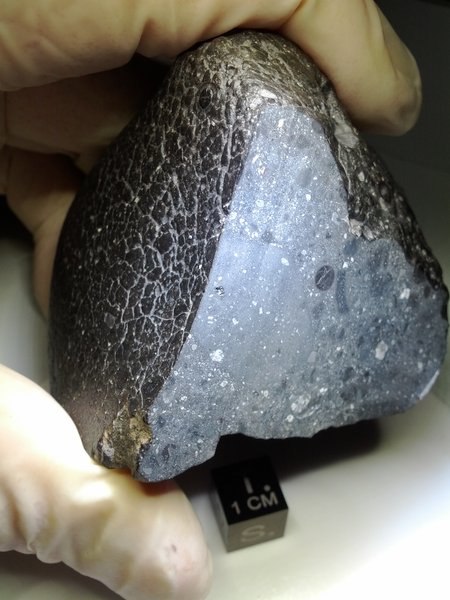The mystery of how Mars meteorites reach Earth may finally be solved
It turns out rocks can be hurled much higher from the Martian surface than previously believed.

Scientists have discovered that the force needed to eject rocks from the surface of Mars that eventually pelt Earth as meteorites is actually much lower than previously believed.
Meteorites from a variety of sources have been discovered across Earth's surface for thousands of years, but Mars wasn't suggested as a possible source of this bombardment until the 1970s when measurements of the Martian atmosphere made by NASA's Viking orbiters were found to match gases locked in these space rocks. Nonetheless, it remained unknown how exactly these rocks might have made it all the way from the Red Planet to Earth.
In a new study, scientists from the California Institute of Technology (Caltech) and the Jet Propulsion Laboratory (JPL), simulated the "shock pressure" that is experienced by Mars rocks as they are ejected from the planet. In doing so, researchers found it may not be as difficult to catapult a rock from Mars to space as was previously believed.
Related: Building blocks of life found in famous Mars meteorite
"We're not on Mars, so we can't watch a meteorite strike in person," team member and JPL planetary scientist Yang Liu said in a statement. "But we can recreate a similar kind of impact in a lab setting. By doing so, we found it takes much less pressure to launch a Mars meteorite than we thought."
To make it from the surface of Mars, through the Martian atmosphere, in and out of the near-vacuum of space and then through Earth's atmosphere and onto the surface of our planet, the rocks must survive massive temperatures and pressures and an eventual crash landing.
Until engineers can figure out a way to collect and return Martian samples, these meteorites are the only way they can study the Red Planet's rocks up close and personal. While the meteorites are being studied, other researchers are working to better understand the nature of the impacts upon Mars that could launch pieces of the Red Planet in the first place.
Breaking space news, the latest updates on rocket launches, skywatching events and more!
And as it turns out, Martian meteorites contain other details locked within them about their journey from the Red Planet to Earth.
The glassy material maskelynite is created when the mineral plagioclase is exposed to extreme pressure like those caused by giant impacts. That means finding maskelynite within the rock can hint at the kind of pressures they have been exposed to. Over the last five years, Martian meteorites have been found with a mix of plagioclase and maskelynite which puts constraints on the amount of pressure they must have experienced.
The Caltech/JPL team set about smashing plagioclase-containing rocks from Earth to observe how high pressures cause the mineral to transform. This involved using a powerful gun to blast the rocks with projectiles fired at five times the speed of sound, simulating the kinds of pressures rocks ejected from Mars would experience.
Previous experiments showed plagioclase becomes maskelynite at a shock pressure of 30 gigapascals (GPa), which is 300,000 times the atmospheric pressure on Earth at sea level. These past tests have required reverberating shock waves through a steel chamber, something that doesn't give an accurate picture of what happens during impacts on Mars, however.
In these new experiments, without that steel chamber acting on the shock waves, the scientists found that the transition between plagioclase becomes maskelynite actually occurred at just 20 GPa.
"It has been a significant challenge to model an impact that can launch intact rocks from Mars while shocking them to 30 GPa," Caltech Eleanor and John R. McMillan Professor of Geology and Geochemistry Paul Asimow said in a separate statement. "In this context, the difference between 30 GPa and 20 GPa is significant."
The results are in line with observations of other high-pressure minerals in meteorites that support the idea Martian meteorites experience shock pressures of less than 30 GPa on ejection from the Red Planet.
Armed with these new shock pressure parameters, scientists may eventually be able to trace Martian meteorites to the giant impacts that initially sent them hurtling through space.
"The more accurately we can characterize the shock pressures experienced by a meteorite, the more likely it becomes that we can identify the impact crater on Mars from which it originated," Asimow concluded.
The team's research was published in the journal Science Advances.

Robert Lea is a science journalist in the U.K. whose articles have been published in Physics World, New Scientist, Astronomy Magazine, All About Space, Newsweek and ZME Science. He also writes about science communication for Elsevier and the European Journal of Physics. Rob holds a bachelor of science degree in physics and astronomy from the U.K.’s Open University. Follow him on Twitter @sciencef1rst.


